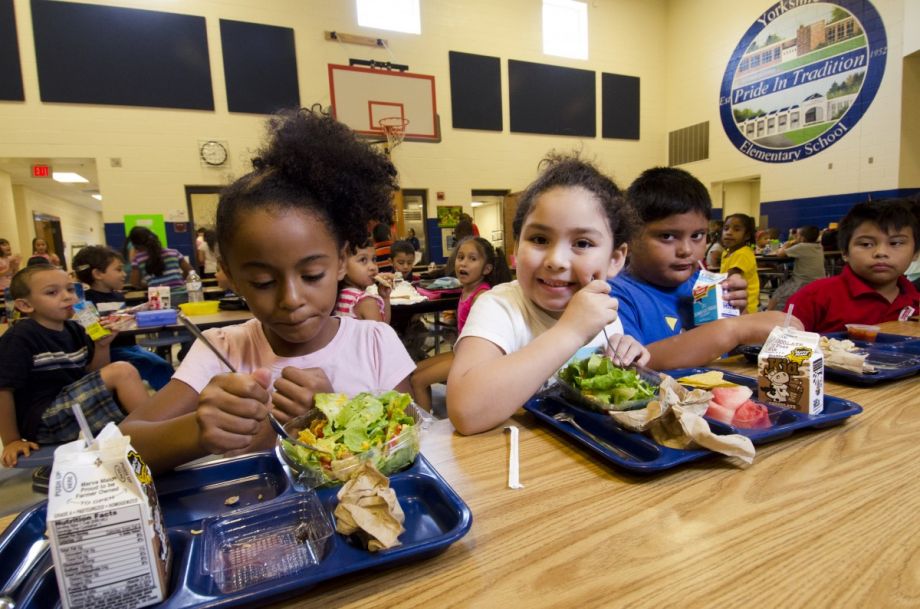As the days get shorter and schools across the nation announce their reopening plans, dilemmas prompted by the coronavirus pandemic seem to be multiplying. Virtual or in-person classes? Risk COVID-19 spread or lose students to the digital divide? How can schools handle school bus rides, hybrid teaching models, class planning?
And who makes sure the kids in those classes are getting enough to eat?
That last one’s a question Patsi Gregory, school nutrition supervisor of twenty schools along the central northern border of Tennessee, is working hard to solve.
Gregory has managed Robertson County’s school lunch programs for more than a decade. As a former teacher and county commissioner, she’s deeply familiar with the children she works with — and passionate about the importance of feeding those children.
“I have been in our schools, and I have looked in the eyes of our kids, and when you look in their eyes, you can tell they’re hungry,” she says. It’s her goal to make sure those kids don’t go hungry this fall. And part of her plan involves continued use of the USDA’s Community Eligibility Provision.
In order for a student to receive free or reduced-price meals in public schools, a student’s family usually has to prove they are eligible for the governmental free lunch program. But for schools where 40 percent or more of all students are in poverty, using the Community Eligibility Provision means free meals for every single student enrolled — no application needed.
That means a lower administrative burden for the schools involved. But “there are lots of benefits to offering free meals to all students in addition to just getting rid of the paperwork,” says Crystal FitzSimons, director of school nutrition program research at the Food Research and Action Center. Those benefits include easier meal access for students that may not meet exact program qualifications but still need financial assistance, reduced lunch stigma for those receiving the meals, and the simple fact that well-fed children do better in class.
“There’s a huge academic benefit for making sure that kids are not sitting in classrooms hungry,” FitzSimons says.
There are 20 schools in Robertson County. Nine of them currently provide free meals to all students under the USDA’s Community Eligibility Provision, according to Gregory.
The Food Research and Action Center currently maintains a database of 82,850 schools and their CEP eligibility, either from state education agencies or state-level entities managing federal school nutrition programs. Over a third of the schools — 30,667 — used the provision last year; based on the rise of SNAP eligibility due to job and income loss due to coronavirus, FRAC spokesperson Jordan Baker says, even more schools are eligible to use it this year.. The deadline for districts to apply for the upcoming school year has been extended to August 31.
As mass unemployment continues, governmental pandemic relief expires, and the number of families in poverty threatens to surge due to both, USDA programs like the CEP are filling the gap. Increased SNAP benefits and the approval of online purchasing, alongside food bank support, public-private partnerships, and the launch of pandemic EBT — an extra food-stamp benefit for families with kids normally receiving free school lunch — are in part because of the fact that those families regularly rely on school meals, Fitzsimons says.
“It’s a huge hardship for families who have relied on free and reduced-price meals to help make ends meet, and to keep hunger at bay, and to make sure that their kids have access to adequate nutrition… it’s a huge challenge, when kids lose access and are not going into the cafeteria every [school] day,” she adds.
Using two nationally representative studies, a Brookings Institute analysis used data from the USDA food security questionnaire in late April 2020 to conclude that overall rates of household food insecurity have effectively doubled due to the COVID-19 crisis. Those hunger rates are even higher for families with children; more than one in five households, and two in five households with children 12 and under, reported that the food they bought didn’t last and that they didn’t have enough money to get more.
And in the middle of a pandemic, the struggle for food access is faced with new barriers. It’s not enough to simply make meals available — it’s also key that schools make them accessible.
Three fourths of Robertson County’s students are attending classes in person, Gregory says, “so we have less students to feed, but we still have to get them through our serving lines six feet apart.” And in comparison to other schools across the nation, Robertson County has a particularly high number of students attending remotely and still using the school lunch program.
The county has around 2,500 virtual students. One out of every five has indicated their interest in school meal pickup.
In the spring and summer, Robertson County Schools used school buses to deliver meals along their regular routes; since those same buses are being used to transport kids to school, that’s no longer an option. Instead, each school is assigned a location (shared with 3-5 nearby schools) for families to pick up meals twice a week. Since Gregory knows some families only have one vehicle, the county’s extended pickup hours till late in the day — that way, a working parent can pick up food after their workday ends.
Why the restriction on location? In the spring, when schools closed, USDA provided meals to communities through summer nutrition programs. Those programs are often more flexible than their school-year counterparts, allowing entities like Parks & Rec agencies, Boys & Girls Clubs of America, and other community organizations to distribute meals at community sites without area requirements or school enrollment-based limitations. But as the summer ends, there’s less flexibility around meal distribution, and that, in turn, means less access to meals.
Support for greater USDA flexibility comes from both sides of the aisle; on July 29, 36 majority-Democrat senators sent a letter to Secretary Perdue asking the department to be more flexible about area distribution restrictions, allow other community organizations to provide meals, and extend nationwide waivers to continue operating the summer programs as-is till the end of the school year. On Aug 17, twenty Republican senators sent a letter to Perdue with similar requests.
“The COVID-19 pandemic has forced schools around the country to close their buildings and shift instruction to online and distance-learning models. For many children, school breakfast and lunch may be the only healthy and regular meals they receive,” the first letter stated. “The economic crisis caused by the COVID-19 pandemic has also resulted in millions of parents losing their jobs, and millions more students will be dependent on school-provided meals.
But the USDA’s response says it doesn’t have authority to extend that flexibility, and that the scope of the senators’ requests “would be closer to a universal school meals program, which Congress has not authorized or funded.” It encourages the use of currently running programs, like the CEP, to provide meals to children throughout this year.
Then again, some experts argue, maybe Congress should provide universal meals. The School Nutrition Association has suggested that breakfast and lunch be provided for free to all students this school year due to the financial crisis and COVID-19 closures.
FitzSimons agrees. “We think schools spend a lot of time collecting and processing school meal applications, a lot of time trying to collect school meal fees for paying families,” she explains. “Schools provide books, they provide lots of things that kids need in order to attend school and achieve, and we think that school meals are an important support as well.
Local school nutrition managers like Patsi Gregory say the same.
“I believe what we need this year, more than anything, is to allow every student to eat at no cost,” she says. “I have schools that qualify for CEP that get to do that, [but] I have eleven schools that don’t.
“I don’t think it’s something as a nation that we could afford to do long range,” she adds. “But I do believe for this year, where we are in this pandemic, it would solve a lot of our problems.”
This article is part of The Bottom Line, a series exploring scalable solutions for problems related to affordability, inclusive economic growth and access to capital. Click here to subscribe to our Bottom Line newsletter.
Hannah Chinn is a freelance writer for Next City. She's also a reporter for WHYY News, covering watershed and environmental issues in Philadelphia, PA. Previously, she reported neighborhood news and city planning and policy stories for WHYY’s PlanPhilly.





_600_350_80_s_c1.jpg)












